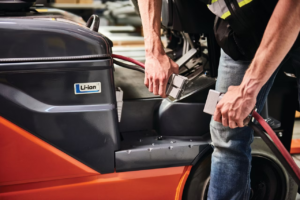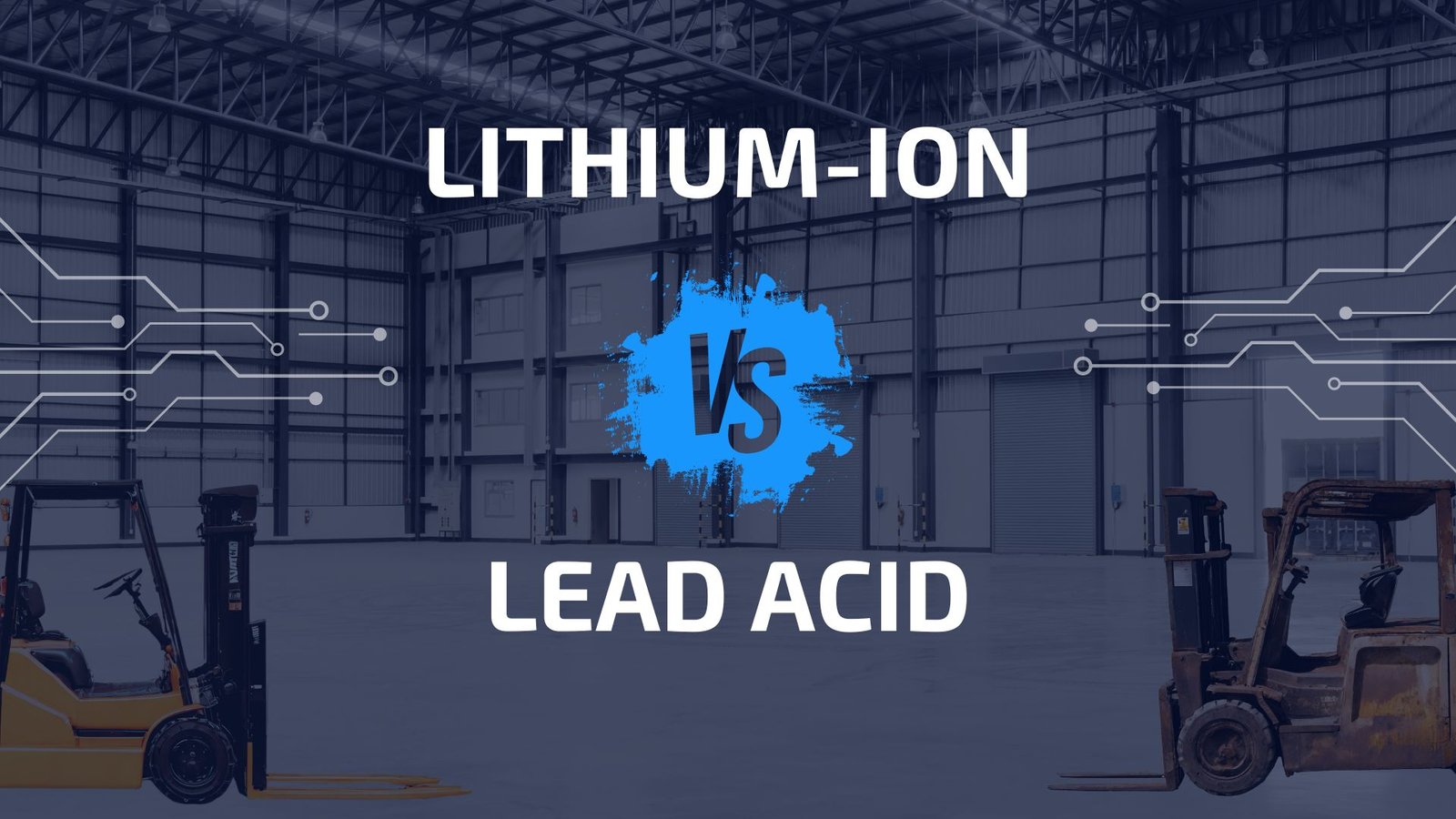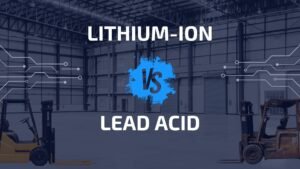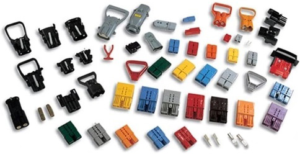Benefits of Adopting Lithium-Ion Batteries for Forklift Operations
Lithium-ion power solutions offer operational advantages that can elevate workplace productivity when infrastructure supports their implementation. For facilities with adequate charging access and long-term operational goals, these energy systems present compelling efficiency improvements worth evaluating.
1. Unwavering Energy Delivery
Lithium-ion batteries maintain stable voltage output throughout their discharge cycle, ensuring consistent power for heavy-duty tasks. Unlike lead-acid batteries, which experience voltage degradation as the charge depletes, lithium-ion technology guarantees peak performance even during extended multi-shift operations. This reliability minimizes workflow interruptions and supports 24/7 productivity in high-demand environments .
2. Accelerated Recharge Rates
With recharge times as short as 25 minutes for partial charges, lithium-ion batteries drastically reduce downtime. Their rapid charging capabilities allow operators to “opportunity charge” during breaks, eliminating the need for dedicated charging rooms or battery-swapping protocols. This flexibility enables a single battery to replace multiple lead-acid units, optimizing energy use and space efficiency .
3. Extended Operational Lifespan
Lithium-ion batteries outlast lead-acid counterparts by 3–5 times, with cycle lives exceeding 3,000–5,000 charges. Their absence of memory effect and tolerance for partial state-of-charge cycles further reduce wear and tear. This longevity translates to fewer replacements, lower maintenance budgets, and a smaller carbon footprint .
4. Simplified Maintenance & Safety
Eliminating the need for watering, equalization charging, or acid handling, lithium-ion systems reduce labor costs by 60% compared to lead-acid batteries. Built-in Battery Management Systems (BMS) ensure safe operation by preventing overcharging, overheating, and short circuits. Their compact, lightweight design also enhances forklift maneuverability in tight spaces .
5. Sustainability & Cost Efficiency
With 95% energy efficiency and zero emissions, lithium-ion batteries align with ESG goals. Although initial costs are higher, their lower operational expenses (e.g., reduced downtime, minimal upkeep) yield a 20–30% total cost of ownership reduction over five years. Companies like Coca-Cola and Amazon have adopted these systems to meet sustainability benchmarks while cutting energy bills .

Steady Power Delivery
Unlike traditional lead-acid counterparts that experience voltage drop during discharge cycles, lithium-ion technology maintains stable energy output from full charge to depletion. This reliability proves critical for meeting production targets across all operational scales – whether managing a single forklift in daylight hours or coordinating round-the-clock multi-unit fleets.
Rapid Recharge Capabilities
Operators gain flexibility through accelerated charging cycles that eliminate mandatory cooling periods. Full charges can be achieved during standard breaks or shift changes, potentially reducing equipment redundancy needs. This feature enables operations to maintain workflow continuity without dedicating extra assets to compensate for charging downtime.
Flexible Partial Charging
The ability to implement opportunistic “top-up” charging during idle periods removes logistical challenges associated with battery replacement procedures. Workers can utilize short downtime intervals to replenish power without interrupting equipment deployment schedules.
Reduced Battery Inventory
Lithium-ion’s extended duty cycle allows single units to serve multi-shift operations that previously required multiple lead-acid batteries. This consolidation decreases capital expenditures on backup batteries while freeing up valuable storage space previously allocated to battery rotation systems.
Simplified Maintenance Protocols
Elimination of water level checks, terminal cleaning, and periodic equalization charges significantly reduces maintenance labor. The sealed construction prevents acid leaks and corrosion issues common in traditional battery rooms, while advanced battery management systems automate cell balancing and performance monitoring.
These operational enhancements position lithium-ion technology as a strategic investment for facilities prioritizing workflow optimization and long-term cost containment. The transition requires careful evaluation of charging infrastructure and usage patterns but offers measurable ROI through enhanced equipment utilization and reduced ancillary costs.
Conclusion
Lithium-ion forklift batteries offer a strategic advantage through superior energy density, adaptability to harsh environments, and seamless integration with smart logistics systems. By transitioning to this technology, businesses can future-proof their operations, enhance safety standards, and achieve long-term cost savings.
For implementation guidance, consult manufacturers specializing in custom lithium-ion solutions tailored to your forklift fleet.



